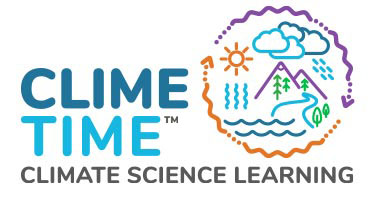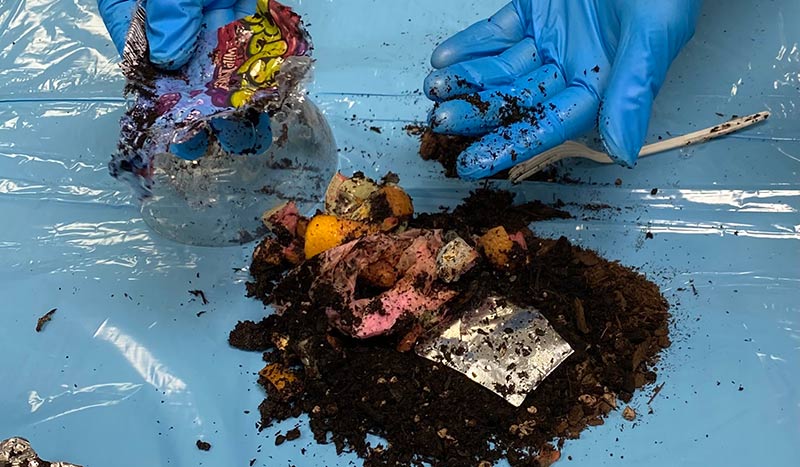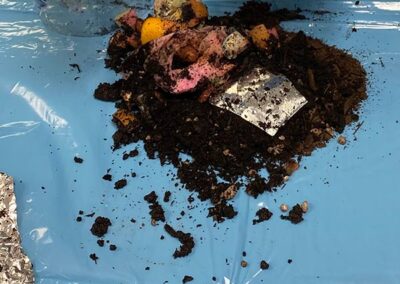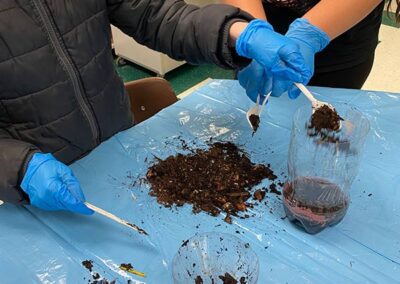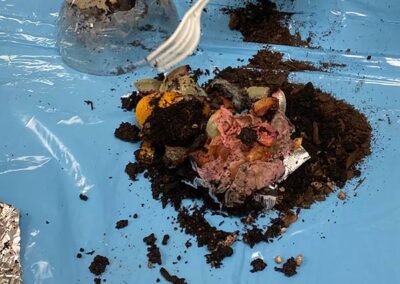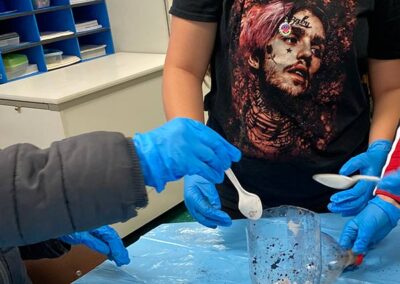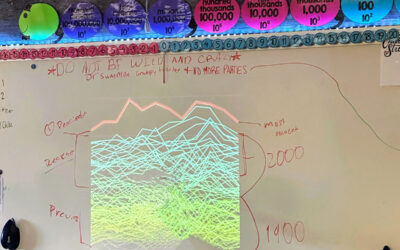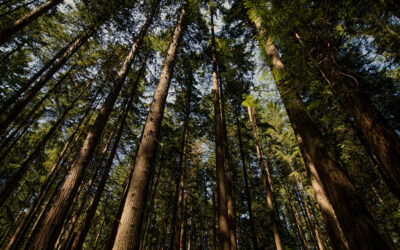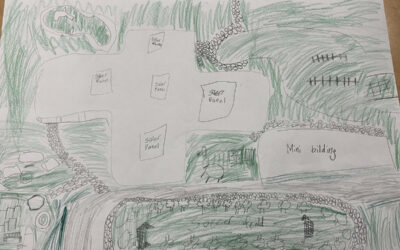What was tried in the classroom?
My class is made up of 9 self-contained autism students. They have very limited background knowledge about the world around them and how they impact the community. We learned about landfills, how to reduce, reuse, and recycle, how landfills effect water quality, and how food waste contributes to global climate change.
The students did a cut and paste poster activity about eutrophication, watched videos about landfills and leachate, and made their own mini-landfills from gathered waste materials. They made predictions about what would happed to the garbage in their mini-landfills and did weekly observations of the layers. After 3 weeks, they dumped out their landfills to see what happened to each item in the landfill.
The students chose what was truly garbage and removed those items. They then put back the food waste, paper, and potting soil and turned their mini-landfills into composters. The class will continue to add to the composters for the remainder of the school year and then add their compost to the bins in the school’s garden center.
How’d it go?
The students were very engaged in the activities. They really enjoyed choosing the garbage to go into their landfills and layering the items. They were very surprised at how the water that was added became so polluted when it seeped through the layers. They were also surprised that the water dripped through the clay “plug” that was the first layer they put.
The students are very proud of their composters and how well they are working. They are excited about the “ceremony” we are planning to do when they add their compost to the garden center’s compost bins.
ClimeTime Training
STEM Seminar: A Taste of Food Waste
Classroom
School: Wilson Middle School
District: Yakima School District #7
Teacher: Amy Thorpe
